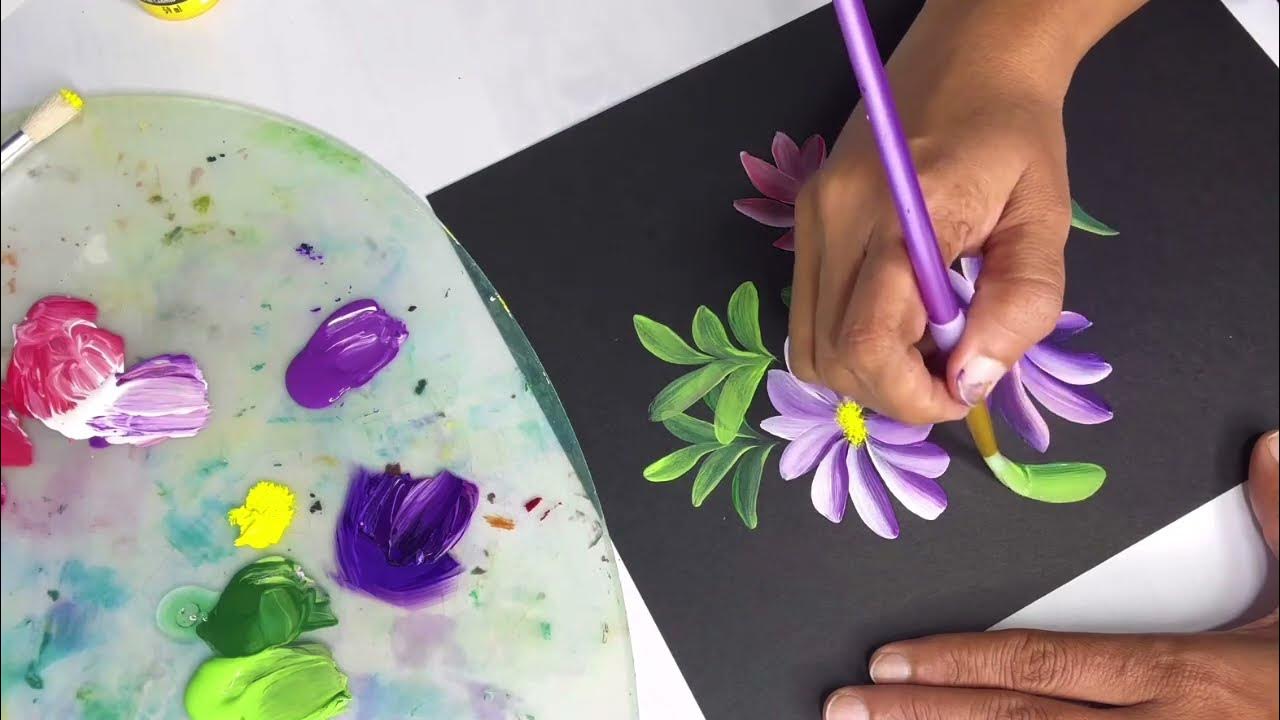Why the Right Tools Make a Big Difference
If your flower oil paintings aren’t turning out the way you imagined, the problem might not be your skill—it could be your tools. Using the wrong brush or an odd color can make even the best flower sketch fall flat. This guide covers the simplest brushes and oil colors that’ll help you paint more confidently and get great results.
🖌 Brushes That Do the Job Right
There’s no need for 20 different brushes. Just a few carefully chosen ones will carry you a long way:
1. Filbert Brushes
Think of these as your go-to brush for petals. The rounded tip makes it easy to shape soft curves and natural edges.
2. Small Round Brush
Use this for details like flower centers or tiny lines along the edge of petals.
3. Flat Brush
Best for laying out wide strokes, backgrounds, and even broad leaves. It’s also great for blocking in areas quickly.
4. Fan Brush (optional but useful)
Some artists use this to add subtle texture or blend lightly. It’s not essential, but can give cool effects if used carefully.
Tip: Synthetic brushes tend to be better for oil painting beginners because they’re easier to control.
🎨 Simple and Flexible Color Palette
When painting flowers, it’s tempting to grab every color tube you own. But simplicity often leads to better results. Here’s a beginner-friendly palette:
- Titanium White – You’ll use this a lot
- Cadmium Yellow (light or medium) – Great for sunflowers, roses, and highlights
- Alizarin Crimson or Quinacridone Rose – Makes rich pinks and reds
- Ultramarine Blue – Mix with rose or red to create purples
- Sap Green – Good for stems and foliage
- Burnt Sienna – Adds warmth and shadow tones
You can mix nearly every flower tone from these few colors. Plus, keeping it limited avoids muddy results from too much mixing.
🔄 Keep It Clean, Keep It Easy
When switching between petal and leaf colors, remember to wipe your brush well or use separate ones. Many beginners forget this and end up with brownish petals—not pretty.
Also, test your color mixes before using them on the actual canvas. It’s a little step, but it saves you big problems later.
🌼 Favorite Combos for Popular Flowers
Here’s a cheat list to try out:
- Roses: Quinacridone Rose + Titanium White
- Sunflowers: Cadmium Yellow + touches of Burnt Sienna
- Lavender: Ultramarine Blue + Alizarin Crimson + White
- Leaves: Sap Green + a bit of Ultramarine for shadows
You don’t need perfect matches—just colors that feel close and blend well.
Mistakes to Avoid
- Using only one brush for everything: You’ll lose variety and texture.
- Choosing too many colors: This leads to confusion and mud.
- Overblending your petals: Keep some strokes visible for energy and freshness.
Also, try not to rush. Oil paint gives you time—use it.
Wrapping It Up
Painting flowers in oil becomes way simpler when your tools are on point. You don’t need fancy supplies. Just a couple of solid brushes and a few essential oil colors can really make your work bloom. Keep experimenting, and you’ll find your groove sooner than you think.
